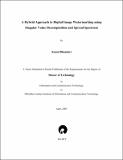Hybrid approach to digital image watermarking using singular value decomposition and spread spectrum
Abstract
We have seen an explosive growth in digitization of multimedia (image, audio and video) content and data exchange in the Internet. Consequently, digital data owners are able to massively transfer multimedia documents across the Internet. This leads to wide interest in security and copyright protection of multimedia documents. Watermarking technology has evolved during the last few years to ensure the authenticity of multimedia content. We compare the widely used spread spectrum technique with the newly evolved technique based on Singular Value Decomposition (SVD) for watermarking digital images. The techniques are tested for a variety of attacks and the simulation results show that the watermarks generated by both the techniques have complimentary robustness properties. We propose a new hybrid technique for watermarking digital images, combining both paradigms, which is capable of surviving an extremely wide range of attacks. Our technique first embeds a watermark in an image using spread spectrum concepts and then to increase the robustness, another SVD based watermark is added such that they do not interfere with each other. Our technique is robust against a wide range of distortions like filtering, noise adding, lossy compression, print & rescan and non-linear deformations of the signal such as, histogram manipulation, dithering and gamma correction. The watermark added by our technique is perceptually invisible. The effectiveness of this technique is demonstrated against a variety of standard image processing attacks.
Collections
- M Tech Dissertations [923]

